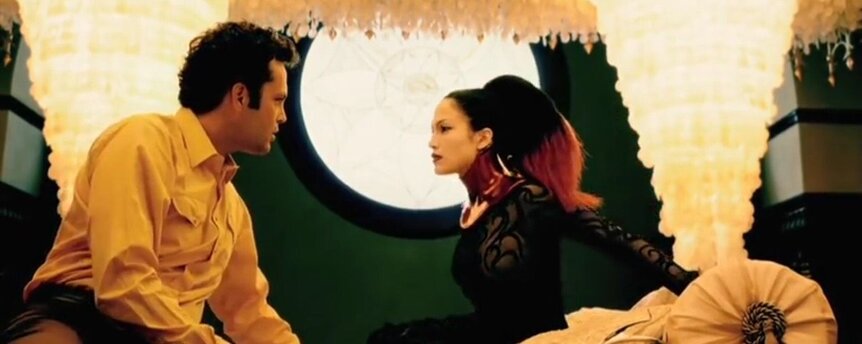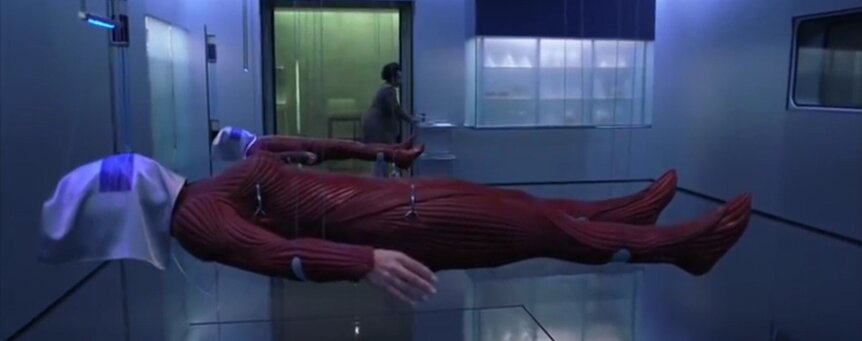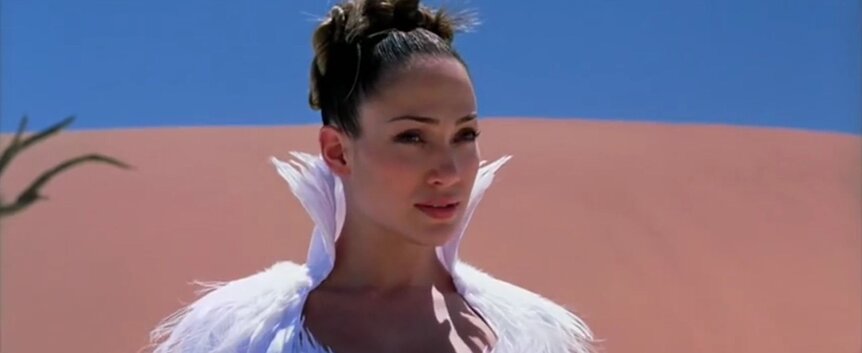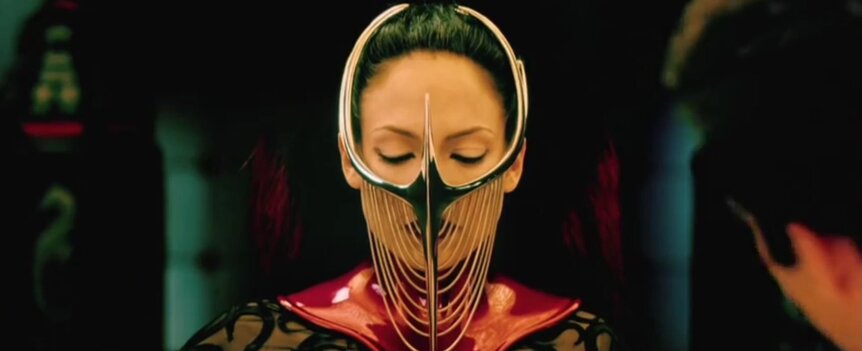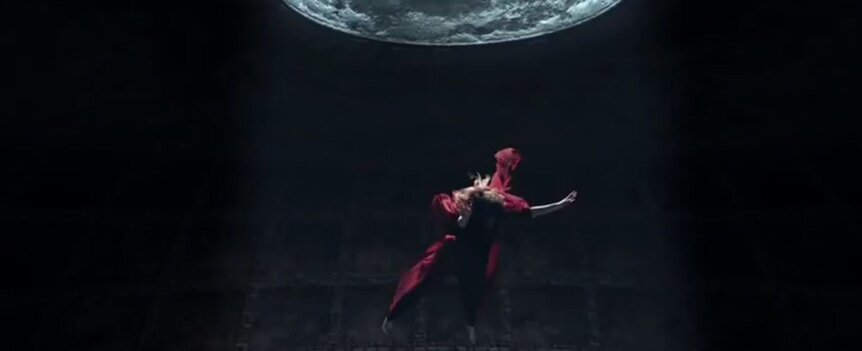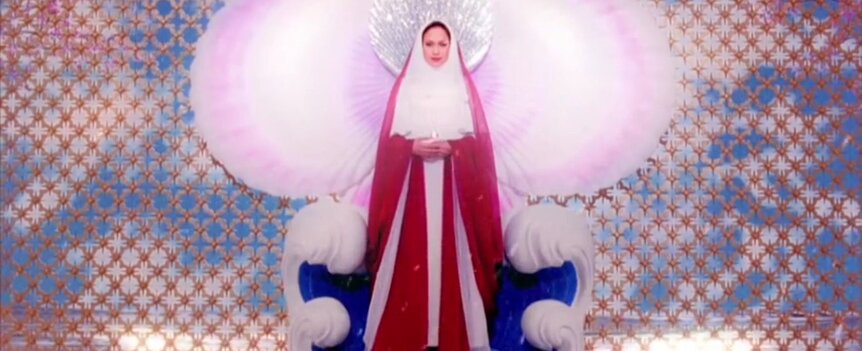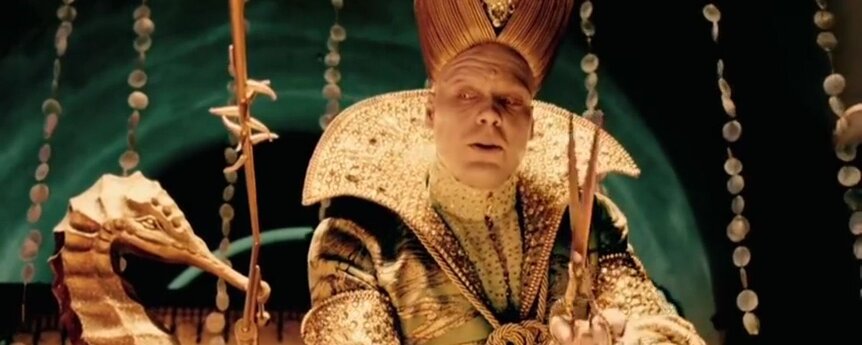Create a free profile to get unlimited access to exclusive videos, sweepstakes, and more!
Revisiting Eiko Ishioka's fairy tale nightmare costumes of The Cell
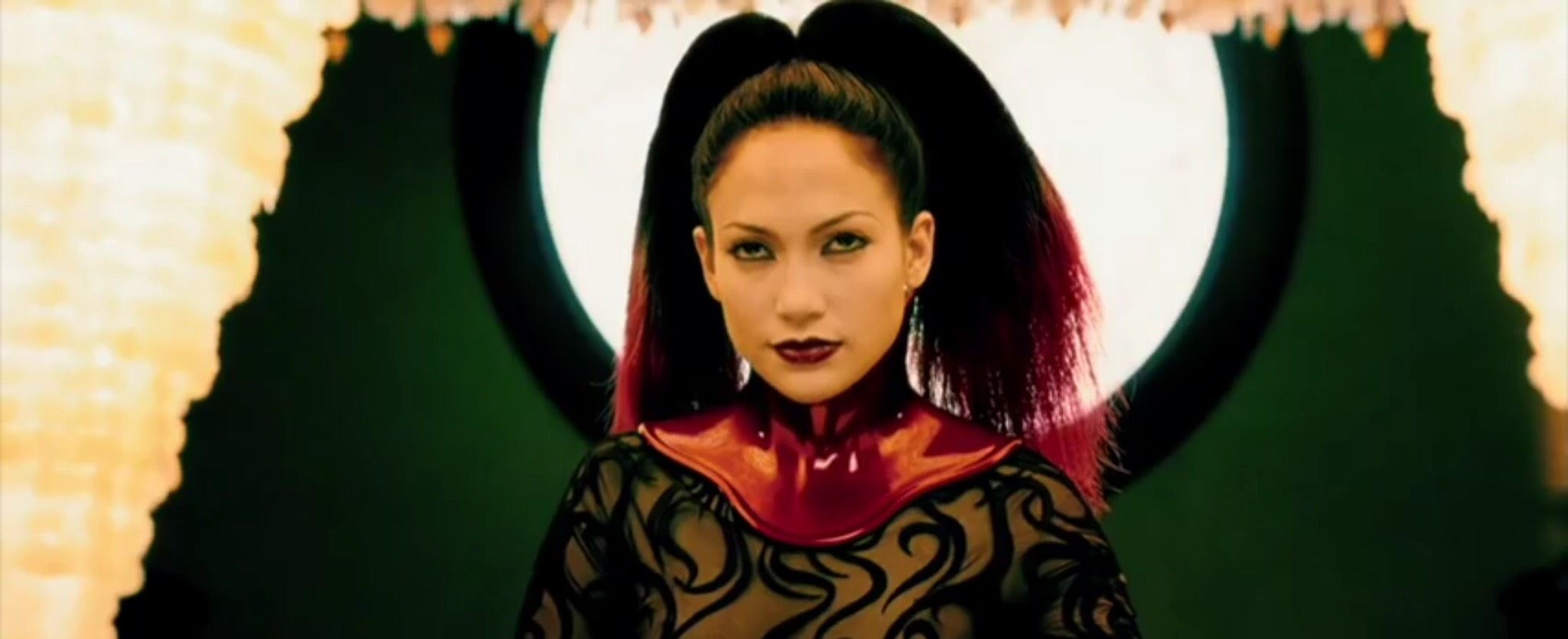
The line between a fairy tale and a nightmare is often thin, particularly if you go back to the stories written by Hans Christian Andersen and the Brothers Grimm. In 2012, director Tarsem Singh's Mirror Mirror took the story of Snow White to new visual heights, in part thanks to his collaboration with Japanese production and costume designer Eiko Ishioka. Before her death in 2017, Singh worked with Ishioka on each of his movies, including his directorial debut in 2000, The Cell.
Stretching a visual dreamscape into a horrifying ordeal, The Cell stars Jennifer Lopez as child psychologist Catherine Deane. Experimental technology referred to as a "Neurological Cartography and Synaptic Transfer System" allows her consciousness to enter the mind of a comatose subject. A young boy is the initial recipient of this treatment, but eventually the FBI comes calling with a dangerous request that takes a "through the looking glass" aesthetic to a terrifying place: the mind of a serial killer.
Carl Rudolph Stargher (Vincent D'Onofrio) employs a particularly torturous method of killing his victims before turning them into human dolls. There is a time crunch factor involved, as he keeps them alive in a sealed container before filling it with water.
An extreme neurological condition leaves Carl catatonic with no chance of recovery, but he has just kidnapped another woman and the FBI has no idea where she is being held. They are in a race against the clock, which is why they turn to this unorthodox form of questioning. Catherine is tasked with entering Carl's mind to find the answer before it is too late — but there is a big difference between the mind of a child and that of a twisted serial killer.
In 1992, Ishioka won an Oscar for her vivid work on Bram Stoker's Dracula. When the film was released, director Francis Ford Coppola explained how powerful her work is. "When you make a movie, you don't get exactly what you want — you never do — you get percentages. Except for Eiko. She got what she wanted." The deep vivid shade of red worn by Gary Oldman as Dracula is a signature color that is recurrent in her work. The Cell is no different, and a crimson motif repeats throughout the movie, beginning with the deepest shade in the muscular rubber suit worn by those taking part in this process (itself resembling the armor worn by Oldman in Bram Stoker's Dracula), which gives the illusion they are floating in the air without their skin on.
In each case, the red costume stands for something different: a sacrifice, a warrior, a saint, and a human version of a sex toy. In the mind of a serial killer with a predilection for sexual sadism, the garments are going to reflect this.
The visuals of The Cell were a cause for both celebration and criticism when it was released in 2000. Revisiting it nearly 20 years later, the production and costume design is still the most striking aspect of the movie. Lopez gives a solid performance, swinging between different levels of power within this landscape; coincidentally, her pop music career is good preparation for the different characteristics each costume requires her to take on. Meanwhile, Singh's background in music video directing led to a lot of comparisons to this part of his career in the reviews from when this movie initially premiered.
An expansive desert provides the dramatic backdrop of the opening scene — that, yes, could be from a music video — telling a fairy tale in reverse. The first of many audacious costumes as worn by Lopez in The Cell, this feathered high-collar white gown is fit for a princess getting married at the end of a movie, but this proves to be just the beginning of her ordeal. Within the consciousness of a child's mind, she is the heroine dressed all in white. Later, her own dreams are impacted by her work; her ensemble is different, but it is just as dramatic and bridal.
Exploring the mind of a serial killer has been done in many ways, with Thomas Harris' legendary character Hannibal Lecter as the definitive art-meets-horror killer series. In Red Dragon, the work of William Blake provides the foundation, and the visuals in The Cell are reminiscent of this.
The late '90s and early '00s featured a lot of psychological-thriller serial killer material of varying quality, including Se7en, The Bone Collector, and Along Came a Spider. A lot of these movies examine the psyche of a twisted murderer, but only The Cell enters his actual mind.
And what a disturbing vista this is. Human doll dioramas, a nod to Damien Hirst's (often dissected) animals in formaldehyde exhibits, and twisted religious iconography provide the inspiration for both the production and costume design. Ishioka's work on The Cell is a marriage of the ornate with an element of darkness, which infuses baroque with kitsch and sadistic elements.
One of the strongest examples of this is the infamous shot of Lopez sitting on a bed in a black dress. At one point during this scene, she resembles a dark angel. When discussing this costume, Ishioka pointed to the different aspects, including how uncomfortable it was in real life. "She essentially becomes a sex toy. So she had to look erotic and uncomfortable at the same time. I gave her a sheer dress, a big black-and-red wig, and a bizarre hard collar made of plastic. Jennifer asked me if I could make the collar more comfortable, and I said, 'No, you're supposed to be tortured.' Mixing old and new materials gives this landscape an otherworldly atmosphere. It isn't meant to look like a place we have been before; this nightmare-scape has to be alien and disturbing.
In her regular attire, Catherine's look is very much of the period — patterned tank tops, capri pants, midi patterned skirts, and sensible blouses — but when she wears clothes as determined by the more extreme side of Carl, the sadism pops out. One of the warranted criticisms of The Cell is that it gives Carl a sympathetic backstory (his father was abusive), thereby offering an excuse for his horrific acts.
A motive is important, but the victims in this movie are little more than props, which is an all-too-common issue with this kind of storytelling. The child version of Carl appears to Catherine, engaging her empathy and expertise. When she appears to the child she is in work-adjacent attire; before she gets to young Carl she is wearing a red gown reminiscent of the flowing white of her child patient.
In the climactic showdown (that takes place in her mind) the religious iconography is explicit, with Catherine taking on the form of the Virgin Mary. Once again, red replaces the signature blue (honestly, where are the candles featuring Lopez in this get-up)?
To win this battle it takes more than light and benevolence, which is where the deep red-clad Catherine shows up with a bow, ready to take down Carl's dark imagery once and for all.
Vincent D'Onofrio has excelled in Daredevil as the larger-than-life Wilson Fisk, and he gives a riveting performance in The Cell. He is the king of this realm, and his costumes underscore this title. With each caped creation by Ishioka, it's as if D'Onofrio has stepped on an operatic stage of torture and trauma.
For all of The Cell's flaws, the costumes by Eiko Ishioka are not one of them — and each new nightmare-infused vista delivers a costume that is impossible to look away from.
